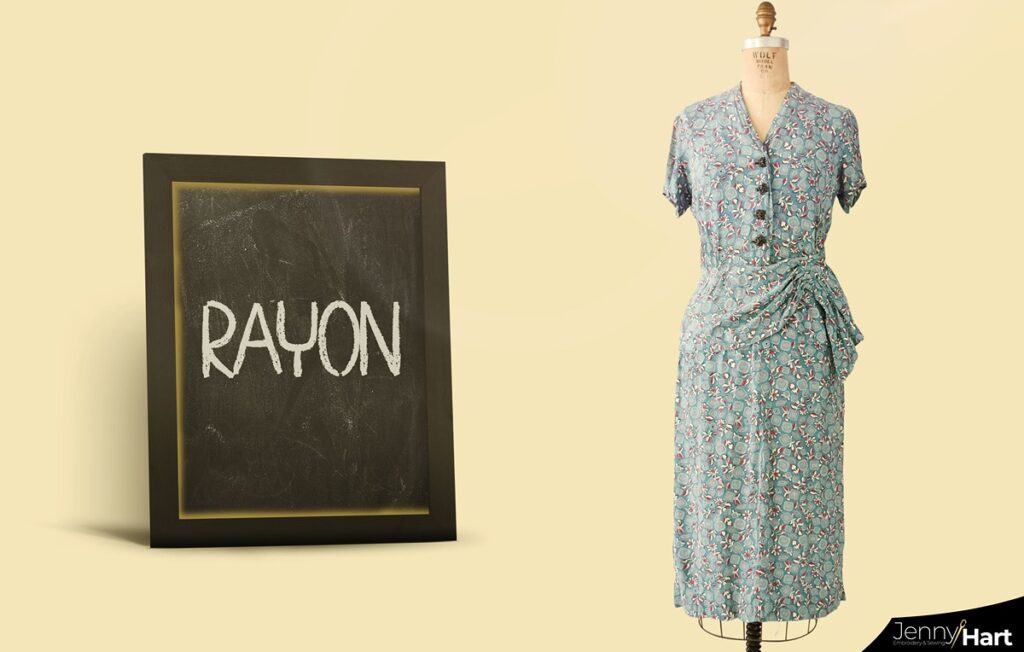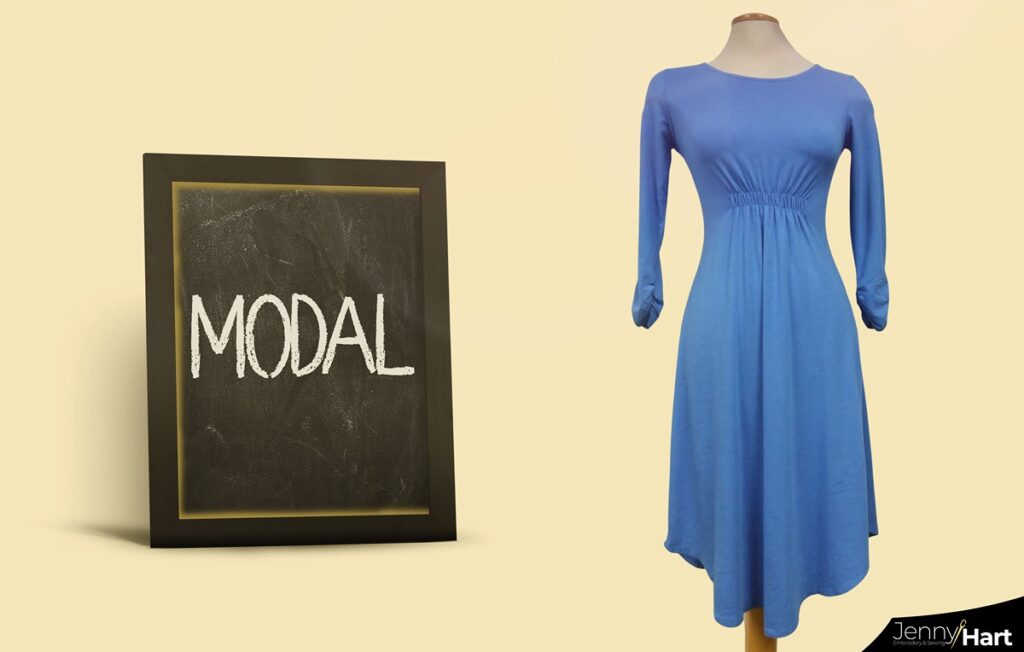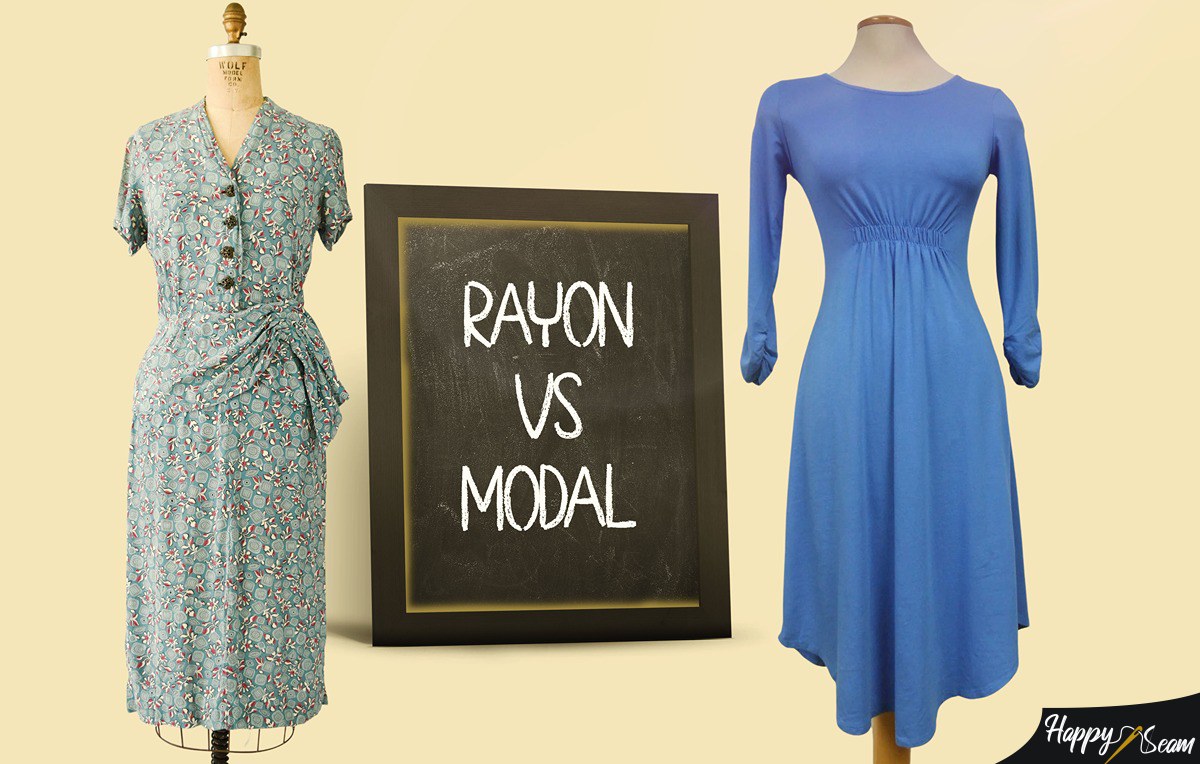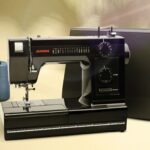You would think that being a derivative of rayon the fabric modal has the same silk-like qualities. Well, that is not quite the case. While they are related and have a similar look modal has its own set of features that are easily comparable to rayon. Features that straightforwardly set up the question at hand “Rayon vs Modal”.
These two materials are very similar and are both extremely worth the investment but if you are looking for the best out of the two the material known as modal is the choice.
Having the ability to be elastic while at the same time soft it has fewer drawbacks than rayon and wins the customer over easily.
It may be just a little more expensive, but it is worth it in the end considering it will not cause any worry to the owner over time.
Key Takeaways
- Rayon has three main types: Modal, Viscose, and Lyocell.
- Modal is an artificial material made from beech trees that do not need a lot of water, hence making it more eco-friendly from rayon.
- If you are looking for an easy aftercare material modal that will cause less stress from rayon.
- Both materials are durable and last long, but they have their quirks.
Rayon vs. Modal: Comparison
Rayon Fiber

As a material rayon is known to be soft. It is great if a manufacturer wants to give its customers a lavish feel without having to go overboard on its budget. In simple words, it is an amazing inexpensive alternative to silk.
As an artificial product, it was designed to be more than just soft. Rayon is also very breathable and lightweight. Qualities that make it ideal if you want to use it as activewear as well. In addition to its activewear qualities rayon is also a very absorbent material meaning that it has no problem being in a moist ambiance.
This versatile material was developed in the late 1800s and soon gained recognition for understandable reasons. Rayons are primarily made from wood pulp, most often bamboo. Because its fibers are constructed of such natural materials, the fabric is prone to degeneration in nature. This, of course, means that rayon throwaways are environmentally friendly, which is a characteristic that is neglected in so many artificial textiles.
Throughout the years’ different types of rayon were created. Mainly only three of these inventions are more commonly used and known. The three spinoffs I am talking about are viscose rayon, lyocell, and model rayon. Model fibers pique our curiosity since they combine all of the excellent characteristics that rayon has with just some problematic downsides.
Modal Fiber

The synthetically made fabric known as modal is essentially made from beech trees. Some might be shocked to know that this makes it more friendly to the environment since beech trees do not need that much water to grow making the textile modal easier to create and even mass produce.
When compared to its predecessor rayon, modal has several characteristics that make it a challenging competitor. Modal fibers are highly breathable, which, combined with their softness, results in a very comfortable product. As a result, modal is increasingly used in intimate clothes where the client desires relaxation, such as pajamas or undergarments. Topping the list modal is also known for its durability, which contributes to its already impressive list of qualities.
With all these positive traits on both sides of the debate even I wonder how you can differentiate between them and choose a single better option. As with any other cloth, rayon and modal have drawbacks. These silk-like materials may be distinguished in two ways: fabric maintenance and fabric longevity. By using these two categories at the end of the article you will be able to differentiate between the two and choose the better alternative.
Fabric Maintenance
An important thought that goes through the mind of a potential buyer is how to take care of the garment upon purchase. This issue is also pondered upon for rayon and modal. Now before we start, I need to inform you that reading the garments label is an essential step even if you are aware of rayons and modal care routine.
Rayon’s fibers are sensitive to heat, this means that when you wash it under no circumstances can you expose it to high temperatures. You are meant to wash the fabric in the coldest setting available on your washing machine or even better hand wash it in cold water. Modal fibers, being a type of rayon, should also follow these steps. On a positive note, modal fabrics have is that they are easier to dry.
The drying process is quite the hassle for rayon, you cannot dry it in a dryer since it will shrink. Even if you want to air dry it you still need to be careful with it not to be exposed to direct sunlight, doing so will shrink the garment. Modal though can easily be dried in a machine the only request it has is that the temperature needs to be at a medium or a low. The same logic should be implied when air drying it.
When it comes to caring after purchase modal has an easier lifestyle since you do not need to be constantly worried if your clothes will become baby-sized due to some heat.
Longevity of the fabric
Being known for their softness the fibers that make up rayon and modal have certain durability and longevity characteristics.
For instance, rayon is sensitive to water, under the pressure of water the threads that make rayon up detangle and thus causing the fabric to rip. Modal fibers are not easily shredded and do not suffer from water sensitivity, but they have another kind of disadvantage, heat. Under exposure to heat, modal fabrics will change color and take up a more yellow nuance especially if the garment is a light color, to begin with. The shrinkage of rayon under heat is another flaw that the fabrics have. A flaw that modal handles better is being able to return to its original shape quicker and easier than rayon.
While modal seems to have a more positive and successful purchase rate from rayon it also has a bigger issue. Modal is known to cause more allergic reactions than any other fabric. Of course, this will affect any buyer and may even make the modal fabric a less desirable textile.
All in all, rayon and modal are durable materials, and their unique requirements may be a deal breaker for some but not for others.
Final Thoughts
Having very similar features choosing between rayon and modal is not an easy task. Trying to find a conqueror to the dilemma “Rayon vs Modal” is a tough assignment when you consider all the great traits the silk alternatives have. In the end, it depends on the customer. If you find yourself identifying more with rayon’s trustworthiness and not being intimidated by its after-care procedures it is a worthy choice. On the contrary, if you want a material that will remain almost the same from the day of purchase modal is for you. With the latter choice, you should be aware of the allergy problem and make sure you do not have any reactions to modal fibers.
Further Reading
There are some other comparison blogs you can read, one would be the rayon vs silk comparison. Another blog compares singer 4423 vs Singer 4432, both are great sewing machines.
A blog also compares Rayon and Viscose, not only this but there’s also a list of some amazing cordless irons that you should check out.
I am a proud mother of two amazing daughters, and i run our sewing & embroidery business full time. I am also a part-time writer for this blog, because i love sharing my findings and experiences!



